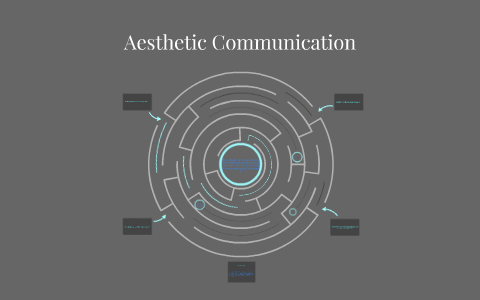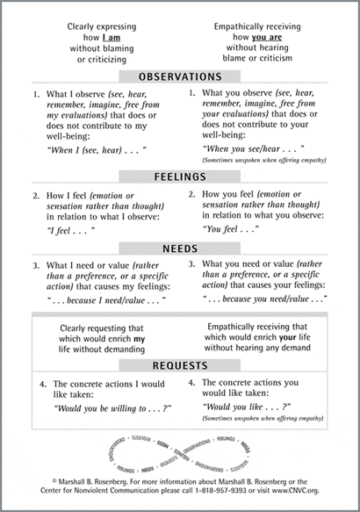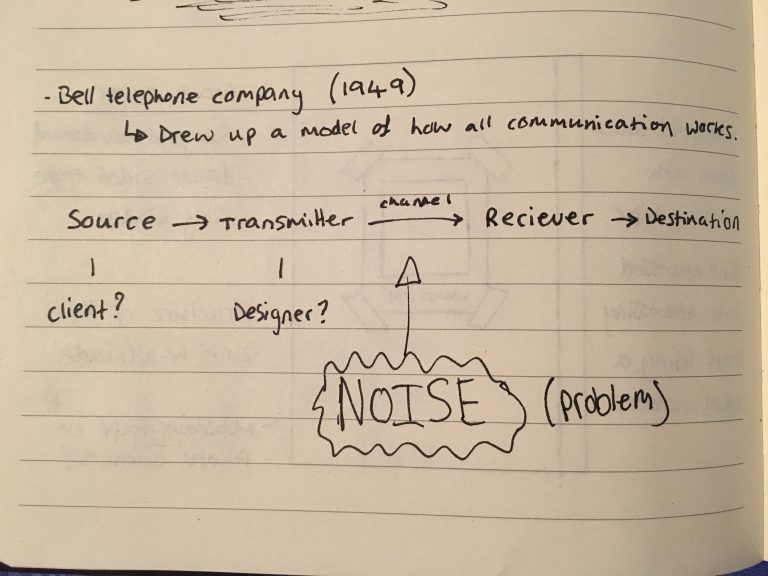What Is Aesthetic Communication?
What is aesthetic communication? It’s all about expressing ideas and emotions through visual design, music, dance, or any form of creative expression. In simple terms, it’s like having a conversation without using words but conveying messages with beauty and style.
Imagine a painting that evokes a sense of peace, or a song that stirs up feelings of joy or sadness. These are examples of aesthetic communication, where the artist uses their craft to connect with the audience on a deeper level.
In this article, we’ll explore the fascinating world of aesthetic communication and how it enriches our lives in ways words alone cannot. So, let’s dive in and discover the power of art, music, and design to communicate messages that resonate with our hearts and souls.

What is Aesthetic Communication: Exploring the Power of Visual Expression
Welcome to the world of aesthetic communication! In a society where visuals dominate our everyday lives, understanding the power and impact of aesthetic communication is more important than ever. From art and design to advertising and branding, aesthetic communication plays a crucial role in conveying messages, evoking emotions, and shaping our perceptions. In this article, we will delve into the depths of aesthetic communication, exploring its definition, elements, and significance in various fields. Get ready to discover the magic of visual expression!
The Essence of Aesthetic Communication: Defining the Unseen Language
Aesthetic communication can be defined as a means of conveying messages, ideas, or emotions through visual elements, such as colors, shapes, patterns, and compositions. It goes beyond mere visual appeal and encompasses the intentional use of these elements to elicit specific responses and create meaningful experiences for the audience. By leveraging aesthetic principles, individuals and organizations can communicate their values, establish brand identities, and connect with others on a profound level.
With the rise of social media and digital platforms, aesthetic communication has become an integral part of our daily lives. From Instagram feeds to website designs, every visual element is carefully curated to captivate our attention, provoke emotions, and convey desired messages. Whether it’s a beautifully shot photograph, a well-designed logo, or an immersive video, aesthetic communication enables us to communicate and connect in a way that transcends language barriers and cultural differences.
Moreover, aesthetic communication is not limited to the world of design and advertising. It permeates various fields, including architecture, fashion, film, and even everyday interactions. From the sleek lines of a modern building to the fashion choices we make, aesthetic communication influences our perceptions and shapes the way we experience the world around us.
The Elements of Aesthetic Communication: Unlocking the Visual Vocabulary
In order to understand the language of aesthetic communication, let’s explore its fundamental elements:
- Color: Colors have the power to evoke emotions, convey meaning, and create visual hierarchy. Each color has its own psychological and cultural associations, making them an essential tool for effective aesthetic communication.
- Shape: Shapes contribute to the overall composition and visual impact of a design. Whether it’s the organic forms found in nature or the geometric shapes prevalent in modern design, they help convey specific messages and create visual interest.
- Pattern: Patterns create rhythm, add texture, and enhance visual appeal. They can convey a sense of order, chaos, or evoke cultural and traditional associations.
- Typography: Typography is not only about legibility; it also carries aesthetic values. Different typographic styles, fonts, and layouts can convey specific moods, enhance readability, and contribute to the overall visual language.
- Composition: The arrangement of visual elements within a design is crucial for effective communication. Balance, symmetry, and hierarchy all play a role in guiding the viewer’s attention and conveying the intended message.
- Texture: Texture adds depth, tactile sensations, and visual interest to a design. It can evoke emotions, create a sense of realism, or even convey specific sensory experiences.
- Space: The use of space, both positive (occupied) and negative (empty), determines the overall visual impact and clarity of a design. It also contributes to the viewer’s perception of depth and can convey a sense of openness or confinement.
The Significance of Aesthetic Communication in Art and Design
In the world of art and design, aesthetic communication plays a vital role in conveying ideas, emotions, and narratives. It allows artists and designers to create visual experiences that resonate with the audience, provoke thought, and inspire action. Whether it’s a thought-provoking painting, an innovative product design, or an immersive exhibition, aesthetic communication elevates the impact of artistic expression.
One notable example of aesthetic communication in art is the use of color theory. Artists strategically use colors to convey specific moods, evoke emotions, and create visual harmony or contrast. For instance, warm colors like red and yellow often evoke feelings of energy and warmth, while cool colors like blue and green can create a sense of calm and tranquility.
In the realm of design, aesthetic communication is crucial for creating user-friendly interfaces, engaging marketing materials, and impactful branding. By considering the target audience, the intended message, and the values of the brand, designers can craft visual experiences that effectively communicate and resonate with the viewers.
Aesthetic Communication in Advertising: Shaping Brand Identities and Connecting with Consumers
In the fast-paced world of advertising, aesthetic communication plays a key role in capturing the attention of consumers, differentiating brands, and building meaningful connections. Ads are no longer just about conveying information; they are crafted to evoke emotions, create desire, and leave a lasting impression.
One powerful example of aesthetic communication in advertising is through photography. A well-composed photograph can instantly convey a brand’s values, create an emotional connection with the viewer, and influence their perception of the product or service being advertised. The use of colors, lighting, and composition are all carefully considered to create a visually compelling image that tells a story and leaves a lasting impact.
Furthermore, aesthetic communication in advertising extends beyond visuals. It encompasses the entire user experience, from the design of a website to the copywriting and even the packaging of a product. Every element is an opportunity to communicate the brand’s identity, values, and unique selling propositions.
Exploring the Power of Aesthetic Communication Across Different Industries
Aesthetic communication goes beyond art, design, and advertising—it is everywhere around us. Let’s take a look at how it influences various industries:
Aesthetic Communication in Fashion: The Art of Style
Whether it’s through clothing, accessories, or runway shows, the fashion industry relies heavily on aesthetic communication to convey style, create trends, and evoke emotions. From vibrant color palettes to intricate patterns and avant-garde designs, fashion communicates individuality, identity, and cultural affiliations.
In fashion, aesthetic communication is not only about the visual elements but also about the overall sensory experience. Fabrics, textures, and even scents contribute to the overall aesthetic and help establish emotional connections with consumers.
Brands like Louis Vuitton, Gucci, and Chanel have mastered the art of aesthetic communication, creating iconic designs that are instantly recognizable and evoke a sense of luxury, sophistication, and exclusivity.
Aesthetic Communication in Film: The Language of Cinema
In the world of film, aesthetic communication plays a pivotal role in conveying stories, evoking emotions, and immersing viewers in different worlds. From the composition of a frame to the lighting, color grading, and set design, every visual element is carefully curated to create a cohesive and impactful cinematic experience.
Directors like Wes Anderson and Quentin Tarantino are renowned for their distinct visual styles, which have become synonymous with their storytelling. Through the use of unique color palettes, stylized compositions, and attention to detail, they communicate narratives and capture the essence of their stories.
Aesthetic communication in film extends beyond the visuals. Sound design, music, and even costumes contribute to the overall aesthetic, enhancing the emotional impact and creating a multisensory experience for the audience.
Aesthetic Communication in Architecture: Shaping the Built Environment
Architects are masters of aesthetic communication, designing structures that not only fulfill functional requirements but also communicate meaning, evoke emotions, and contribute to the surrounding environment. From the iconic Guggenheim Museum in Bilbao to the futuristic designs of Zaha Hadid, architecture conveys cultural values, aspirations, and the spirit of a place.
Aesthetic communication in architecture encompasses not only the physical forms but also the use of materials, textures, and the integration of natural elements. Architects often leverage sustainable design practices, incorporating green spaces, natural light, and environmentally friendly materials to create visually appealing and ecologically responsible structures.
By understanding the power of aesthetic communication, architects can shape the built environment to enhance our well-being, create memorable experiences, and foster a sense of connection with the spaces we inhabit.
Conclusion
Aesthetic communication is a powerful tool that allows us to transcend language barriers, evoke emotions, and create meaningful connections. From art and design to advertising and everyday interactions, visual elements shape the way we perceive the world and communicate our ideas, values, and identities. By harnessing the power of colors, shapes, patterns, and compositions, we can craft experiences that resonate with others, provoke thought, and leave a lasting impact. So, embrace the language of aesthetic communication and unlock the endless possibilities of visual expression!
Key Takeaways: What is aesthetic communication?
2. It involves the use of art, design, music, and other creative mediums to express emotions, ideas, and concepts.
3. Aesthetics can evoke various emotions and provoke thought, making it a powerful form of communication.
4. Aesthetic communication is not limited to traditional forms of art but can also be found in everyday objects and experiences.
5. Understanding aesthetic communication helps us appreciate the beauty and meaning behind visual and sensory stimuli.
Frequently Asked Questions
Curious about aesthetic communication? Find answers to your questions below.
How does aesthetic communication differ from verbal communication?
Aesthetic communication goes beyond traditional spoken or written language. It involves conveying messages and ideas through visual and sensory elements such as art, design, and music. Unlike verbal communication, which relies on words, aesthetic communication taps into emotional responses and experiences to convey meaning. It can be both subtle and powerful, as it engages our senses and emotions to communicate on a deeper level.
For example, consider a painting that evokes a feeling of peace or a captivating advertisement that tells a story without using any words. These are both forms of aesthetic communication that transcend language barriers and connect with people on a visual and emotional level.
How does aesthetic communication impact our daily lives?
Aesthetic communication is present in various aspects of our daily lives, sometimes even without us realizing it. It influences our choices, preferences, and interpretations of the world around us. For instance, when we decide which movie to watch based on its visually stunning trailer or appreciate the design of a product before deciding to purchase it, we are engaging with aesthetic communication.
Aesthetics also play a role in advertising, fashion, interior design, and many other fields. Companies carefully consider the visual and sensory elements in their branding and marketing strategies to capture the attention and engage the emotions of their target audience. Aesthetic communication can enhance our experiences, create connections, and shape our perceptions of the world.
Are there any universal principles in aesthetic communication?
While aesthetic preferences can vary across individuals and cultures, there are some universal principles that often influence aesthetic communication. One such principle is the idea of harmony or balance. Humans tend to find balanced compositions visually appealing, where elements are arranged in a way that feels stable and pleasing to the eye.
Another universal principle is that of visual contrast, which creates interest and grabs attention. Contrast in color, shape, or texture can add visual appeal and help communicate meaning. Additionally, the concept of unity, where elements are connected and cohesive, is often sought in aesthetic communication to create a coherent and impactful message.
Can aesthetic communication be learned or improved?
Absolutely! While some individuals may naturally have a heightened sense of aesthetic communication, it is a skill that can be developed and improved upon. By studying and appreciating various art forms, observing design principles, and understanding the emotional impact of different stimuli, one can enhance their ability to communicate aesthetically.
Practicing mindfulness and paying attention to the sensory aspects of our surroundings can also help improve our aesthetic communication skills. By actively engaging with visual art, music, and other forms of aesthetic expression, we can better understand the messages and emotions they convey, and apply those insights in our own communication efforts.
How does technology influence aesthetic communication?
Technology has significantly impacted aesthetic communication, expanding the possibilities and reach of creative expression. With advancements in digital tools and platforms, individuals now have the ability to create, share, and engage with aesthetic content like never before.
Social media platforms, for example, provide spaces for people to share their visual creations, discover new artistic styles, and connect with a global community of artists and enthusiasts. Additionally, technologies such as virtual reality and augmented reality allow for immersive aesthetic experiences, where individuals can interact with art and design in new and exciting ways.
Aesthetics Defined (What is Aesthetics, Aesthetics Explained, Definition of Aesthetics)
Summary
Aesthetic communication is all about expressing feelings and ideas through art and design. It helps us connect and understand each other better. By using visual elements like color, shape, and texture, we can communicate emotions without using words.
Art and design have a big impact on our lives. They can evoke different emotions and influence our moods. Through aesthetic communication, we can share our thoughts, experiences, and cultural beliefs in a powerful and creative way. So next time you see a beautiful painting or a well-designed poster, remember that it’s not just about looking pretty, but also about communicating something meaningful.



